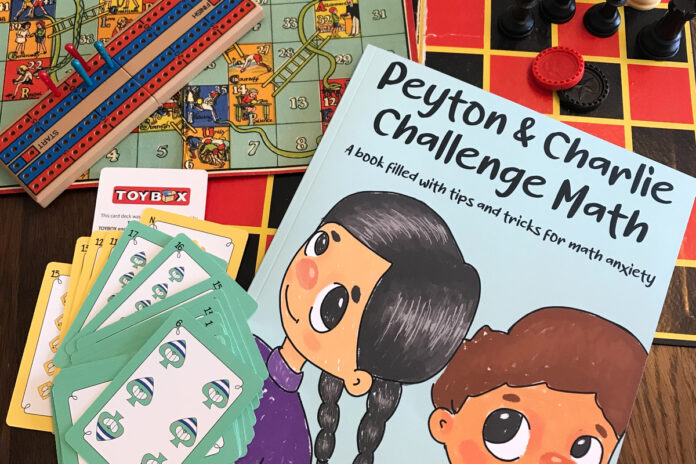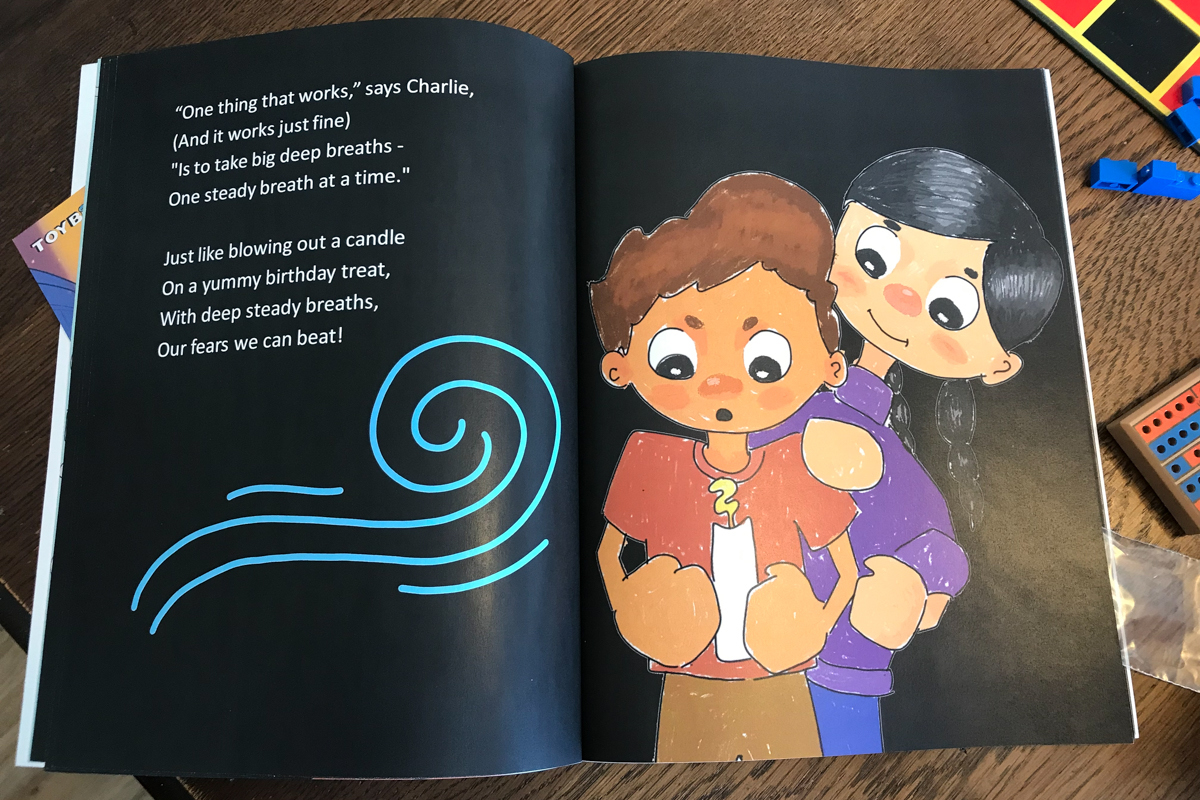
Professors at the universities of Ottawa and Winnipeg are promoting awareness and offering solutions for students of any age who struggle with math anxiety through a new children’s book.
Erin Maloney, a University of Ottawa assistant professor of psychology, and Sheri-Lynn Skwarchuk, a University of Winnipeg professor of education, united to co-author Peyton & Charlie Challenge Math, which was published in November.
The book outlines evidence-based methods readers can use to cope with math anxiety and highlights its normalcy. Math anxiety is just one subcategory of general anxiety where intrusive thoughts disrupt cognition needed for math.
Partly because Maloney is blind, the book uses black backgrounds, white words and a dyslexic-friendly font so people with low vision and dyslexia can read it.
Math anxiety is characterized by inner tension, apprehension and dread that interfere with how we manipulate numbers and solve math problems, as described in a February 2022 research article by a peer-reviewed National Academy of Sciences journal. Stronger anxiety about math tends to result in poorer math achievement, and people experiencing math anxiety may spend their life avoiding math.
“In the book, the characters deal with math anxiety in a series of games,” Maloney said. “One suggestion is to hold out your index finger and imagine that as [a] birthday candle.”
By pretending to blow out the imaginary candle on a birthday treat, readers use steady deep breaths to help them focus on overcoming their math-associated fears.
Another suggestion in the book encourages readers to start with math questions they already know so they can grow their confidence. There’s also a deep-breathing technique that involves using one hand to trace the other as if the fingers are mountain peaks, inhaling while tracing up and exhaling while tracing down.
“Simple things such as being confident in your additions, subtractions, multiplications and long divisions go a long way when it comes to math anxiety.”
If math anxiety is left unattended, children tend to struggle with it more as years go on, Skwarchuk explained. To avoid this, she suggested introducing children to math as early as age three so they can develop a comfortable relationship with it.
“Simple things such as being confident in your additions, subtractions, multiplications and long divisions go a long way when it comes to math anxiety,” she said.
Boosting students’ self-confidence to succeed in math can help reduce their feelings of math anxiety, according to a 2020 study by University of Western Ontario psychologists.

Skwarchuk added that acknowledging this anxiety in any age group can help students.
“For a child who’s anxious about math in Grade 1, when they’re in Grade 2 and Grade 3 they tend to continue to be anxious about math,” Maloney said. “They continue to do a little bit worse in math than the rest of their peers who are not anxious.”
Having parents, guardians and educators who understand math anxiety is also important, Maloney said.
“If we acknowledge that a fairly large portion of our K-12 students are experiencing anxiety when it comes to math … we can start to help these children regulate some of those uncomfortable emotions,” she said. “There’s evidence to suggest that it leads to them performing better.”
Math anxiety for post-secondary students
According to research by Maloney, math anxiety is prominent in post-secondary students as well, with 25 per cent of American undergraduates reporting moderate to high anxiety about math.
“[Post-secondary school] is a tough time for students,” Skwarchuk said. “You’re taking all of these courses and living away from home, so there’s a lot of anxiety. If anxiety is an issue, really break it down and reach out to the resources at your school.”
Habiba Kadiri, a University of Lethbridge associate professor of mathematics, gave a talk last month titled “Resilience in Mathematics” about how post-secondary students in particular struggle with math anxiety. Kadiri said one of its triggers can be the fear of seeming unintelligent when asking questions.
“A lot of students struggle with impostor syndrome in post-secondary [education],” she said.
Kadiri added that students may experience math anxiety because math is a very competitive field and can be a “gatekeeper community” where people pursue it for a secure salary and to become “part of the elite.”
“If they fail, that’s pretty much the end of their dream.”
Math can also cause severe emotional stress for people, Kadiri said. She described the intense and competitive training post-secondary students dedicate themselves to for preparatory class in her native France.
“Calculus can leave some trauma for people who want to do pre-med,” she said. “They have to pass those tests. If they fail, that’s pretty much the end of their dream.”
“As [society is] becoming more reliant on STEM, in some ways there’s more pressure to do well in math,” Maloney added.
She noted that taking this pressure students face into consideration could be the first step for dealing with math anxiety.
“Once we’ve acknowledged these feelings of math anxiety, then we can start to deal with them.”
Featured image provided by Sheri-Lynn Skwarchuk/University of Winnipeg.





